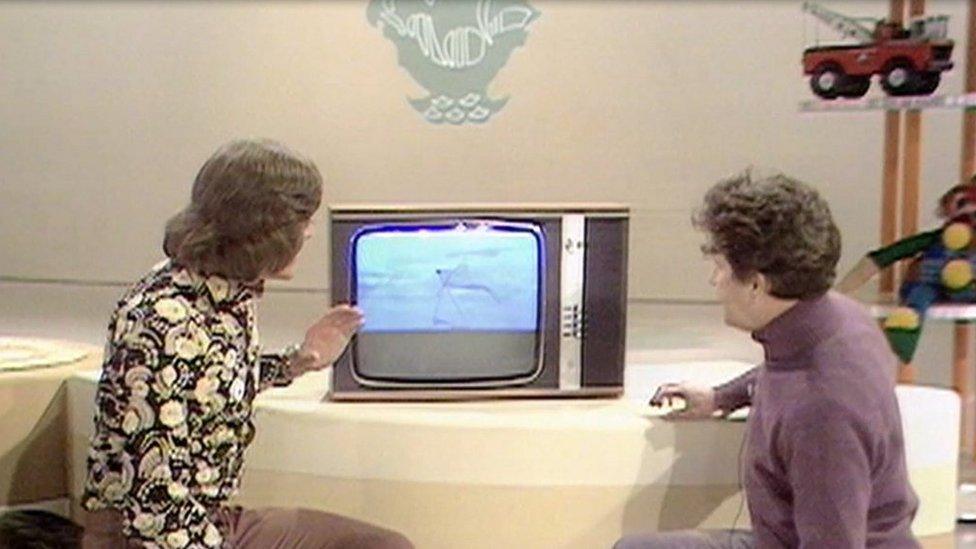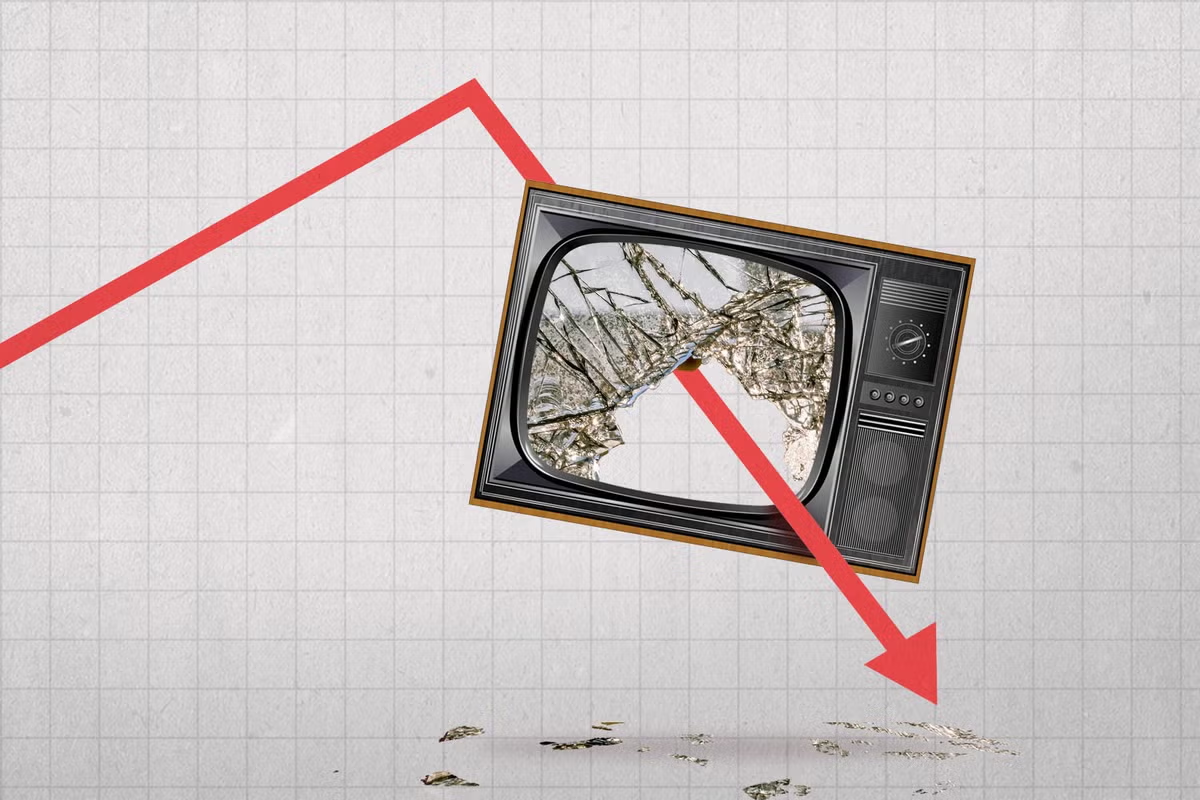The Rise and Fall of Television: A Deep Dive Into TV’s Golden Era and Its Gradual Decline
Television has been a transformative force in global media, fundamentally changing how we experience entertainment, news, and social interaction. From its early days as a technological marvel to its reign as the dominant form of mass communication, television held a unique place in the hearts and homes of billions. Yet, as digital platforms such as streaming services and social media have risen to prominence, traditional television finds itself in decline, no longer the unchallenged medium it once was.
This blog will analyze the rise of television, its golden years, the factors that led to its decline, and what this shift means for the future of mass media. Through economic, technological, and cultural perspectives, we will explore the complete lifecycle of television, providing a research-based look at how TV shaped society and how it faces challenges in today’s digital-first world.
The Origins of Television: A Revolution in Media
Television didn’t just appear out of nowhere. Its journey began in the late 19th and early 20th centuries when inventors like Paul Nipkow, Philo Farnsworth, and John Logie Baird worked on the underlying technology for transmitting moving images. In 1927, Farnsworth transmitted the first fully electronic image, marking a breakthrough in the history of television .

The post-World War II era marked a critical period for television, as technological advancements and improved manufacturing turned it into a household staple. During the 1939 New York World’s Fair, RCA presented the first public demonstration of TV, cementing its future as the next major medium of mass communication . By the 1950s, the rapid expansion of television sets in homes in the United States and Europe laid the groundwork for television’s golden era.
The Golden Age of Television: The 1950s and 1960s
The Post-War Boom
The period following World War II is often considered television’s golden era. TV sales surged as households sought out new forms of entertainment. Family sitcoms, dramas, and live broadcasts captivated the imagination of millions.
In the 1950s, iconic shows like I Love Lucy, Leave It to Beaver, and The Ed Sullivan Show dominated the airwaves. They reflected the post-war optimism, family values, and aspirations of the middle class. By 1955, half of all U.S. households owned a television set, making it the centerpiece of family life.
Television as a Cultural Powerhouse
Television wasn’t just a medium for entertainment—it became a cultural powerhouse, influencing politics, culture, and even world events. One of the most striking examples was the televised debate between Richard Nixon and John F. Kennedy in 1960. The debate highlighted the growing importance of image over words, as Kennedy’s polished appearance played a significant role in public opinion.
Television also played a pivotal role in airing significant events like the moon landing in 1969, which was watched by 650 million people around the world . The Vietnam War, broadcast into living rooms in real-time, shaped public opinion about the conflict, demonstrating television’s growing role in shaping political discourse.

The Expansion and Globalization of TV
By the 1970s and 1980s, television networks had expanded their reach across the globe. Public broadcasters like the BBC in the UK and other national channels across Europe, Asia, and Latin America became essential to the media landscape. In developing regions, television was more than entertainment—it was a tool for education and social development.
The emergence of satellite technology in the 1980s allowed television to reach remote areas, while cable networks in developed countries expanded content options dramatically. Shows like Friends and The Simpsons were syndicated globally, becoming cultural touchstones in dozens of countries.
Technological Advancements: From Analog to Digital
From the 1980s to the 2000s, television underwent significant technological changes. The shift from black-and-white to color TV in the 1960s had already altered how audiences consumed content, but the introduction of cable television in the late 1970s, digital broadcasting, and high-definition television (HDTV) in the 1990s made for a more immersive and diverse viewing experience.
Cable TV’s ability to offer hundreds of channels and premium services allowed for niche programming, leading to specialized networks like ESPN for sports, MTV for music, and CNN for news. These technological advancements widened television’s appeal and drove further commercial growth.
The Business of Television: Advertising and Revenue Models
The business of television has always revolved around advertising. By the 1960s, TV had surpassed radio as the primary medium for advertisers. Brands understood the immense reach and power of television, and as viewership increased, so did advertising revenue .
Networks relied on a model where prime-time shows attracted millions of viewers, allowing advertisers to pay premium rates for commercials during these broadcasts. Shows like Seinfeld, Friends, and The Simpsons became syndication powerhouses, earning billions in licensing fees from global distribution.
The Decline: The Rise of Digital Media and Streaming
The 21st century brought about profound changes in media consumption, leading to the decline of traditional television. The rise of the internet, coupled with the advent of smartphones and social media, introduced new ways for people to consume content. Streaming services like Netflix, which transitioned from DVD rentals to streaming in 2007, fundamentally altered the media landscape .
Cord-cutting became a growing trend as viewers increasingly canceled cable subscriptions in favor of on-demand streaming services. Platforms like Netflix, Hulu, and Disney+ began offering original content, further pulling viewers away from traditional networks .
The growth of digital advertising also posed a significant challenge to TV networks. Digital platforms such as Google and Facebook now dominate the advertising space, with TV ad spending steadily declining. By 2020, digital ad revenue surpassed TV ad revenue globally .
The Social and Cultural Shifts in Viewing Habits
The changing habits of younger viewers have also contributed to the decline of traditional television. Millennials and Gen Z prefer on-demand content, with binge-watching—viewing entire seasons of shows in one sitting—becoming a cultural norm. Streaming platforms cater to these preferences by releasing full seasons of shows at once .
Moreover, social media plays a crucial role in amplifying TV content. Platforms like Twitter, Instagram, and TikTok have become venues for real-time conversations about shows, driving fan engagement and helping build communities around popular series.
The Economic Impact of Television’s Decline
The economic implications of television’s decline are profound. Advertising revenue for traditional TV networks has decreased, and many networks have had to restructure or consolidate. Large media companies like Disney and Warner Bros. have shifted their focus toward launching streaming services to compete with digital-first platforms .
Despite these challenges, live events such as sports, news broadcasts, and award shows continue to draw significant audiences, providing some stability for the industry. However, the days of traditional television as the dominant form of media consumption are unlikely to return.
The Future of Television: Will It Survive?
While television’s dominance has faded, it is not disappearing entirely. The future of TV may lie in a hybrid model that merges traditional broadcasting with streaming services and interactive digital experiences. Emerging technologies like virtual reality (VR) and augmented reality (AR) could also provide opportunities for innovation in the television industry .
Moreover, artificial intelligence (AI) and personalized content algorithms will likely play a role in shaping the future of television. Networks and platforms are increasingly tailoring content to individual preferences, ensuring that television remains relevant in a rapidly evolving media landscape.
Conclusion: The Legacy of Television
Television may no longer be the dominant force it once was, but its impact on culture, society, and the global economy cannot be overstated. From its role in creating shared experiences to shaping political movements, television transformed the 20th century. As we transition into the digital age, TV’s legacy continues to influence how we consume and interact with media, even as new platforms rise to take its place.
References:
- Lotz, A. D. (2014). The Television Will Be Revolutionized. New York University Press.
- Spiegel, L. (1992). Make Room for TV: Television and the Family Ideal in Postwar America. University of Chicago Press.
- Jenkins, H. (2006). Convergence Culture: Where Old and New Media Collide. NYU Press.
- Hilmes, M. (2003). Only Connect: A Cultural History of Broadcasting in the United States. Wadsworth Publishing.
- Napoli, P. M. (2011). “Audience Evolution and the Future of Audience Research.” The Annals of the American Academy of Political and Social Science, 635(1), 95-111.
- Nielsen (2021). The Nielsen Total Audience Report.
- Statista (2021). Television Market Worldwide – Statistics & Facts.
- eMarketer (2021). TV Ad Spending Worldwide: Trends and Forecasts.

